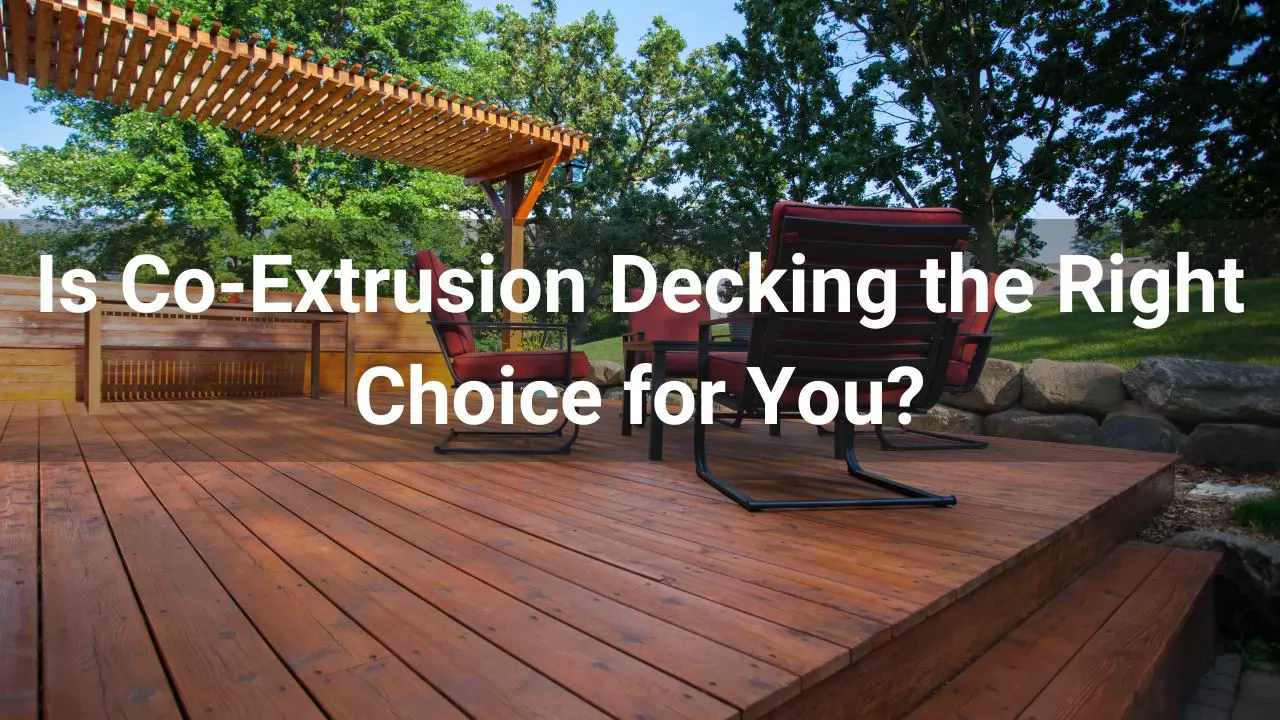

Traditional WPC decking, known as the first-generation composite decking, has long been a popular choice for outdoor spaces due to its cost-effectiveness and reliable performance. It offers a range of benefits, including waterproofing, anti-corrosion, and maintenance-free properties, making it an attractive option for homeowners seeking a durable, low-maintenance decking solution. Its smooth, comfortable surface is also safe for walking barefoot, providing a pleasant experience. However, because the surface layer contains wood powder and is directly exposed to environmental elements, traditional WPC decking is more vulnerable to UV rays, moisture, bacterial growth, and color fading over time. Additionally, the lack of a protective coating leaves it prone to cracking and scratches from heavy foot traffic and furniture movement.
In contrast, the second-generation co-extrusion decking represents a major leap in technology and performance. This high-tech option features a multi-layer cover that encapsulates the decking board in a protective shield made of high-performance polymers. The cover is engineered to provide enhanced resistance to the elements, including moisture, UV exposure, and stains, making the decking more durable and easier to maintain over the long term. Co-extrusion decking is particularly resistant to scratches, stains, and fading, ensuring it retains its attractive appearance even after years of use. The protective outer layer also makes it less susceptible to mold and mildew growth, a common issue with traditional decking.
Because of these enhancements, co-extrusion WPC decking comes at a slightly higher price point than traditional WPC decking. However, this increased cost is balanced by its longer lifespan and reduced maintenance costs. Traditional WPC decking, while initially cheaper, requires more regular upkeep to maintain its appearance and functionality. Over time, this can lead to higher maintenance costs in terms of cleaning, refinishing, or even replacing damaged boards.
When choosing between the two, it’s important to consider the specific environment in which the decking will be used. For areas with harsher weather conditions, co-extrusion decking offers better protection against the elements and is a more cost-effective option in the long run. It also provides a more modern, sleek appearance that remains vibrant for years, enhancing the aesthetic appeal of any outdoor space.
On the other hand, traditional WPC decking remains an excellent choice for those looking for an affordable and functional solution, especially in milder climates where the decking isn’t exposed to extreme weather or heavy wear and tear.
In either case, both decking options provide excellent returns on investment, as they are designed to be durable and long-lasting alternatives to traditional wood decking. With traditional WPC decking, you enjoy the benefits of a low-maintenance, eco-friendly product, while with co-extrusion decking, you gain an enhanced performance product with superior protection and longevity.
No matter which option you choose, LvsenWood’s WPC decking solutions are crafted to meet the demands of modern living, offering both beauty and performance for years to come.







